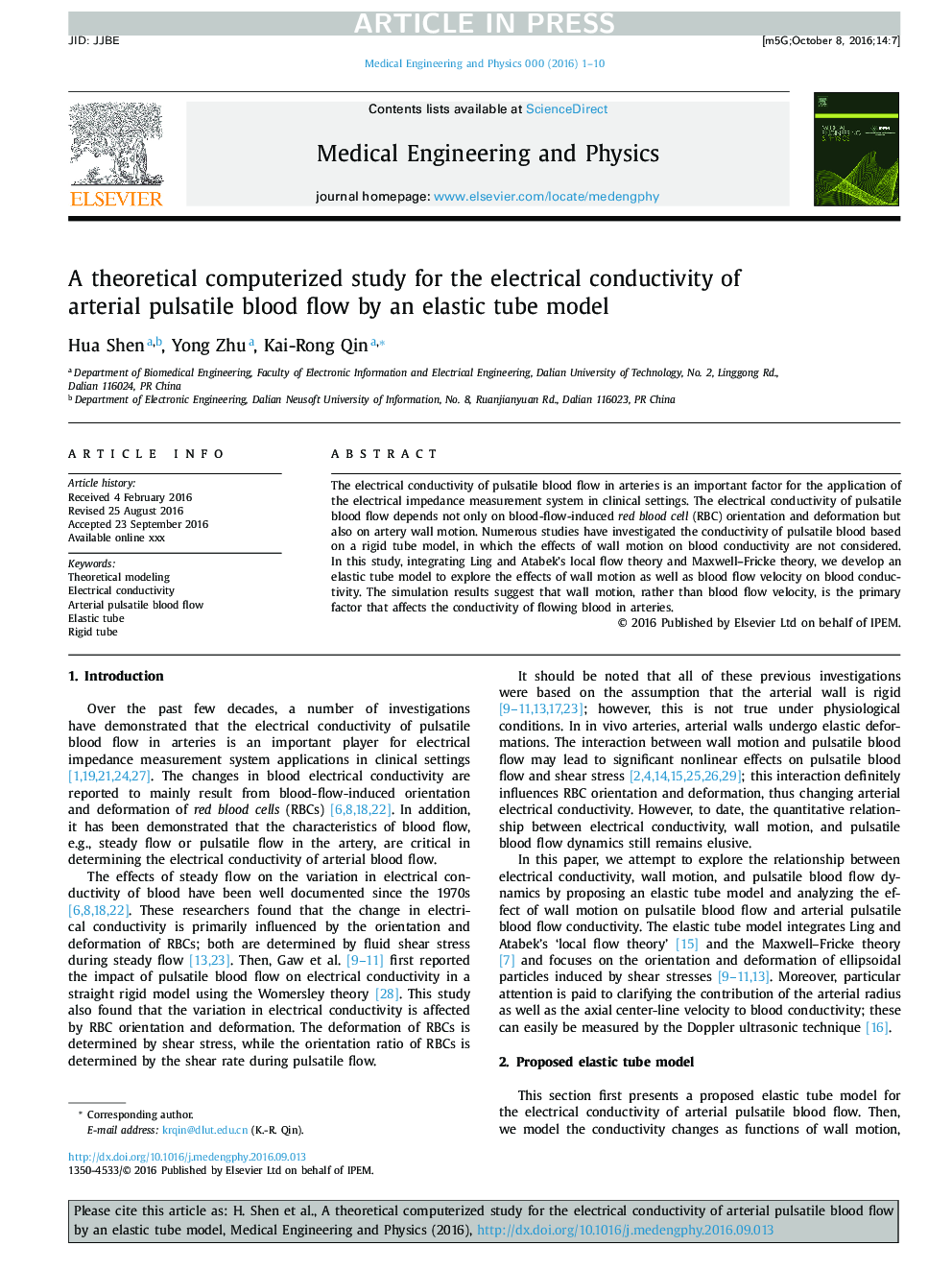| Article ID | Journal | Published Year | Pages | File Type |
|---|---|---|---|---|
| 5032774 | Medical Engineering & Physics | 2016 | 10 Pages |
Abstract
The electrical conductivity of pulsatile blood flow in arteries is an important factor for the application of the electrical impedance measurement system in clinical settings. The electrical conductivity of pulsatile blood flow depends not only on blood-flow-induced red blood cell (RBC) orientation and deformation but also on artery wall motion. Numerous studies have investigated the conductivity of pulsatile blood based on a rigid tube model, in which the effects of wall motion on blood conductivity are not considered. In this study, integrating Ling and Atabek's local flow theory and Maxwell-Fricke theory, we develop an elastic tube model to explore the effects of wall motion as well as blood flow velocity on blood conductivity. The simulation results suggest that wall motion, rather than blood flow velocity, is the primary factor that affects the conductivity of flowing blood in arteries.
Related Topics
Physical Sciences and Engineering
Engineering
Biomedical Engineering
Authors
Shen Hua, Zhu Yong, Qin Kai-Rong,
